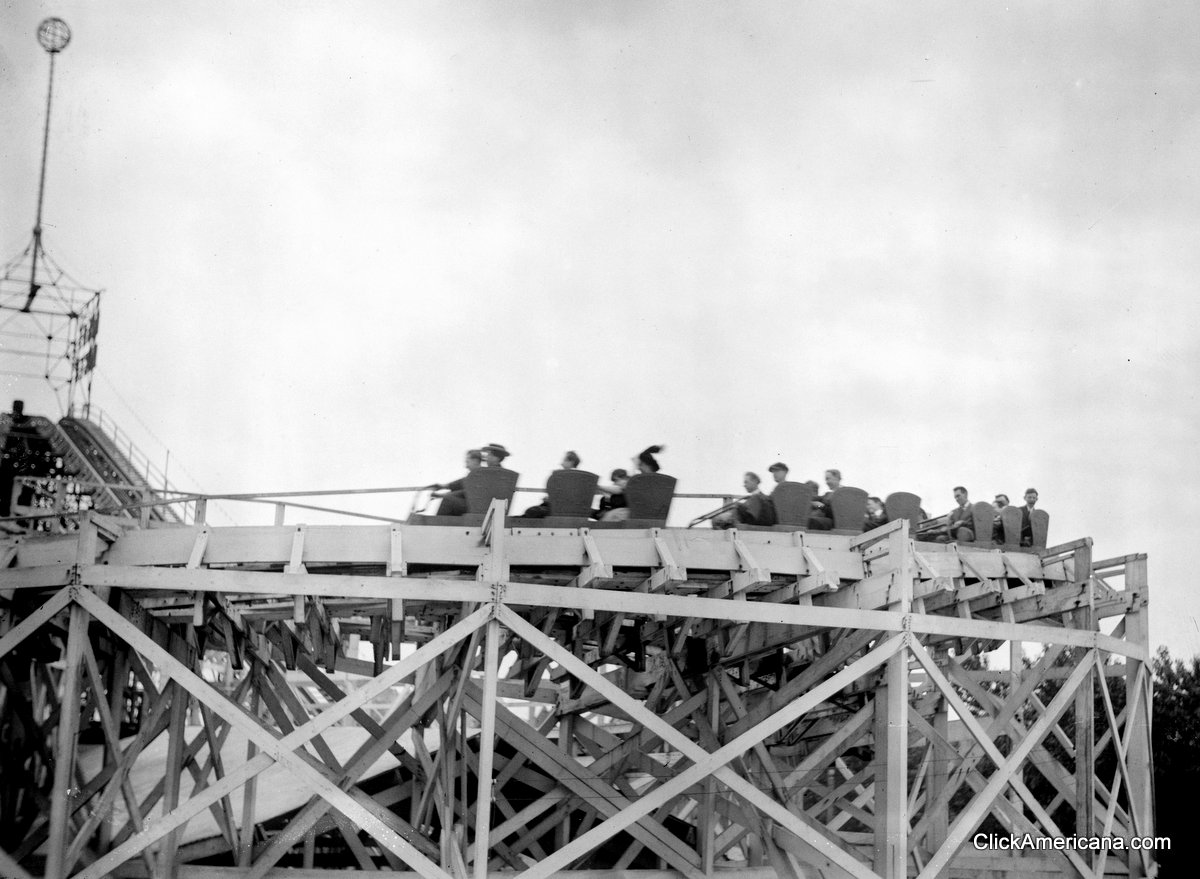By the late 1800s, roller coasters had started to evolve from basic toboggan-style rides into more complex wooden constructions. Safety measures, though, were minimal at best. Riders often sat in open carts with no seat belts, no lap bars, and just a little handle to hold onto. Still, the idea of racing through twists and loops at speeds that rivaled early automobiles was a major draw. Parks from New York to Ohio were packed with folks eager for the rush. (The speed was probably even more exciting to folks in the days when cars were still a novelty!)

Coney Island quickly became the epicenter of early coaster culture. It was home to rides like the Loop the Loop and the infamous Flip Flap Railway, which pulled off full vertical loops using physics that often left riders with sore necks. Over in New Jersey and Massachusetts, similar coasters popped up, each with its own wild design. Some were built so high they resembled barns more than thrill rides — just timber stacked on timber with sharp drops and tight curves.
Coaster builders used trial and error to figure out just how fast and how steep they could go without sending cars flying off the tracks. They used chains to pull the cars up and basic brakes underneath to slow them down. It was all controlled from the ground with a few levers. In most cases, the rides worked. But it was always a gamble. The technology was still new and safety wasn’t yet the priority it is today.
Below, we’ve pulled together photos and details from some of the boldest old roller coasters built between the 1890s and 1910s. These images show the early engineering — and the brave riders — that helped shape modern amusement park design. Take a look at what roller coasters looked like when thrills came with very few rules.

The roller coasters at Coney Island in New York (1910)
From the simple toboggan was gradually evolved the highly complex safety coaster. S E Jackman built most of his structures within the dimensions of a good-sized house or amusement pavilion. The look of even the newest one reminds the spectator of nothing so much as of the good, old, substantial framework joiners put up for big barns and dwellings before the days of steel beams and concrete reinforcement.
A myriad sticks of seasoned timber, bolted and nailed; a wilderness of cross pieces, supports, and stays; a car track that quickly mounts to a height of 75 or 100 feet, circles the level top, dips suddenly for a partial descent, rises again in scary flight, makes a second circuit lower than the first, and so on circles, dips, and rises til like a bird or an aeroplane, it strikes the ground level at last.
A loading lever at the start attaches the car to the chain which carries it up: another lever unloads the car from the chain; and other grips, likewise operated from the ground below, elevate track brakes, which, by pressing the wheels from beneath, reduce the speed on the curves. An emergency brake is supposed to stop everything when required.
Heights and descents are so calculated, or so tried out by actual experiment, that the unconducted car returns, after its swift flight, at snail’s pace to its starting point. – Deseret Evening News (Salt Lake City, Utah) – July 30, 1910
1. Coney Island’s Flip Flap looping roller coaster (c1900)

2. Coney Island, New York: Vintage roller coaster (c1910-1915)

3. Coney Island, New York: Loop the Loop (1903)

4. Atlantic City’s old wooden roller coaster
Atlantic City, New Jersey: Looping the Loop (1901)

5. An old Pennsylvania roller coaster in action
This rollercoaster — known as The Jackrabbit — has been in service since 1920 at the Kennywood amusement park in West Mifflin, Pennsylvania. Footage probably circa 1930s.

6. Massachusetts beach roller coaster
Nantasket Beach, Massachusetts: Roller coaster at Paragon Park (c1890-1910)

7. Ohio amusement parks & their old roller coasters
Euclid Beach, Cleveland, Ohio: Roller coaster (c1890-1910)

MORE: Disneyland opens – Walt Disney’s magical new theme park in Southern California (1955)
8. Cincinnati, Ohio: On the Scenic Railway, The Newsboys’ Picnic (1908)

9. Toledo, Ohio: Boardwalk, casino, showing portion of scenery (c1900-1910)

10. Old roller coaster in Toledo, Ohio: Casino (c1900-1910)



















